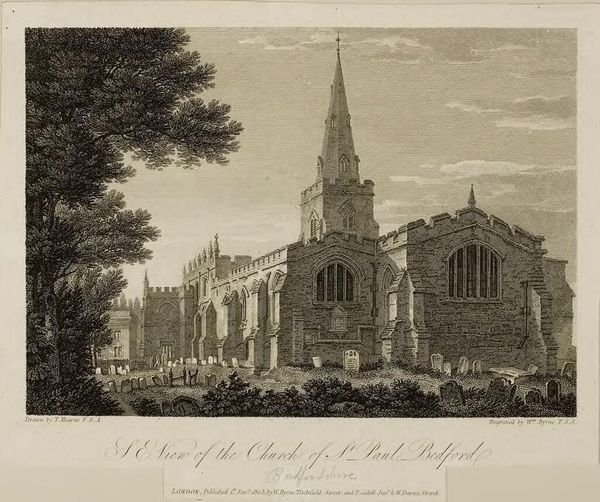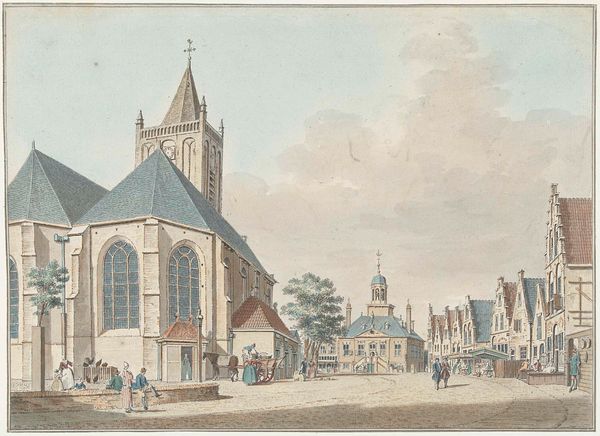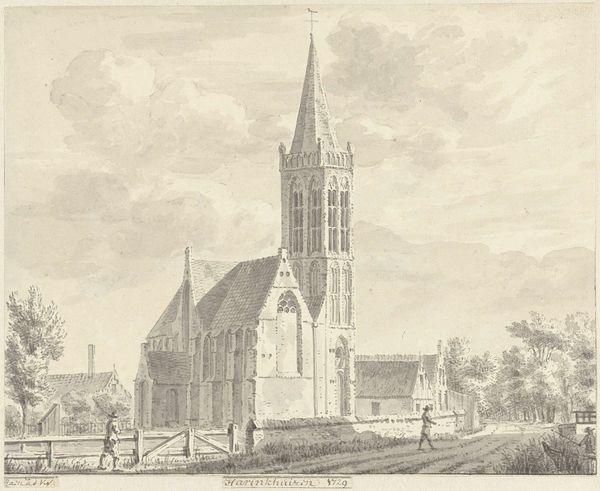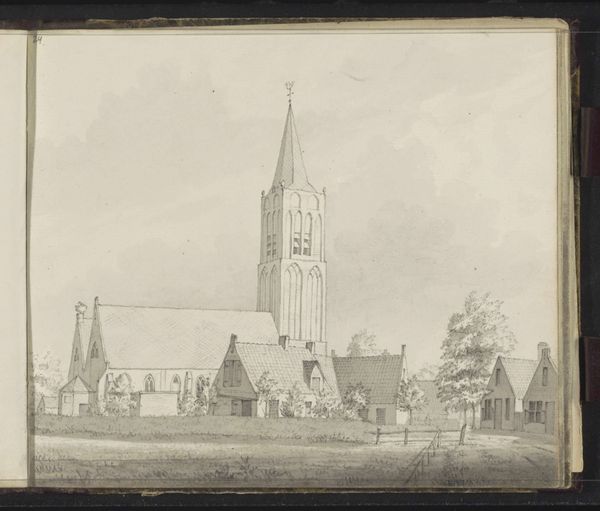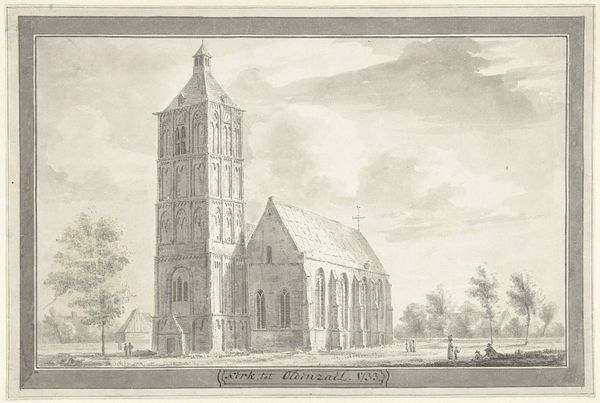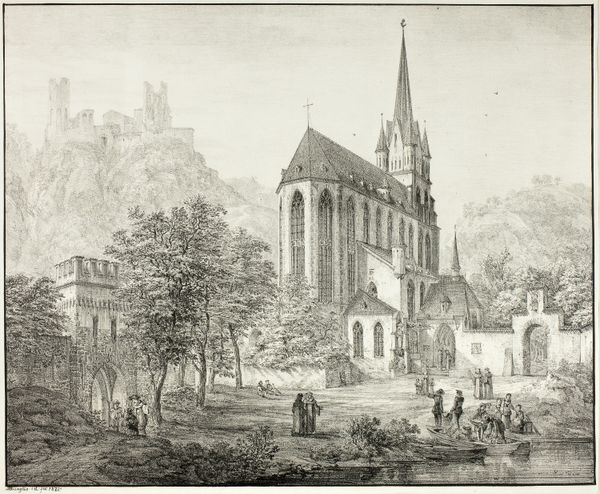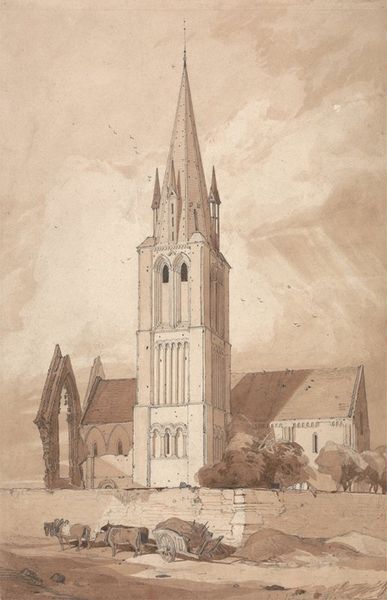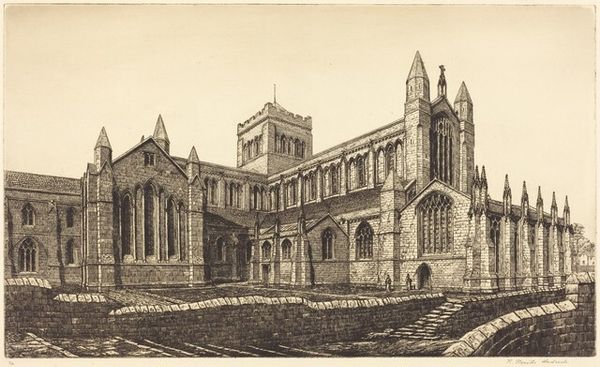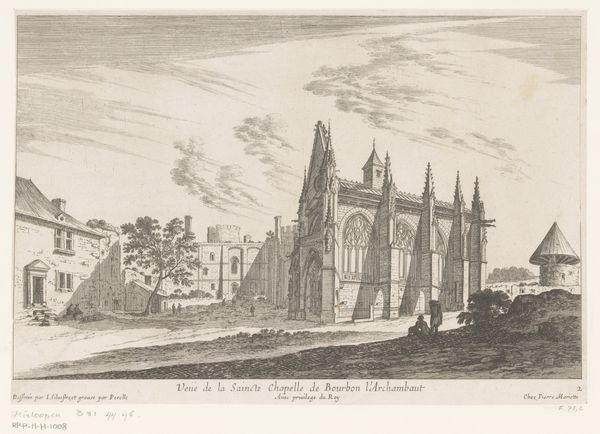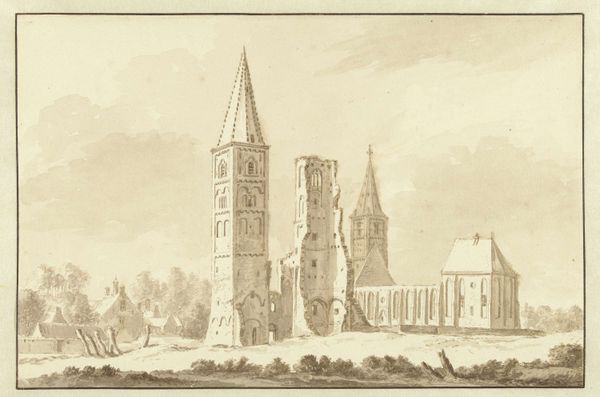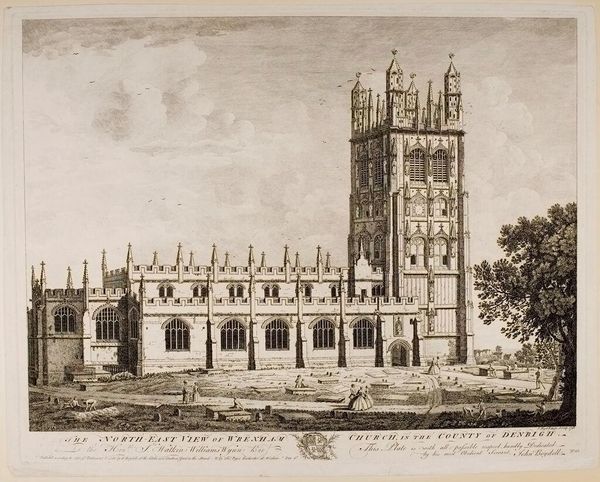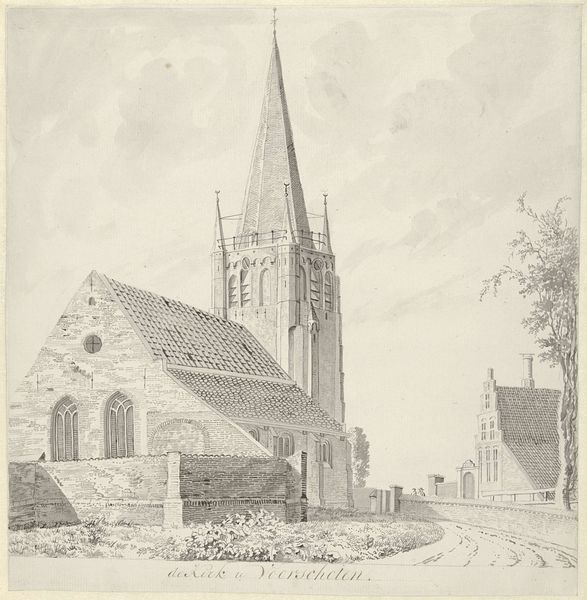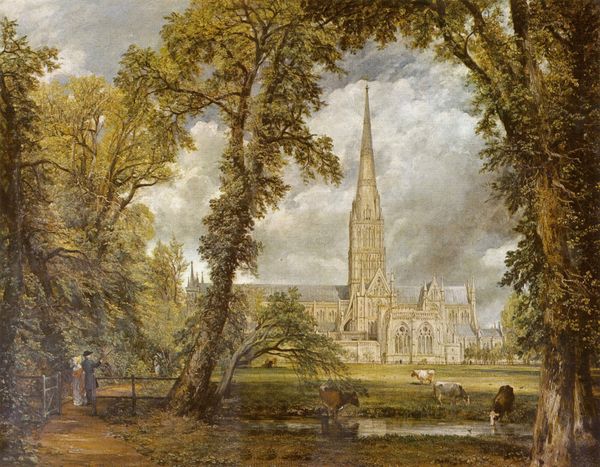
drawing, print, watercolor, pencil, architecture
#
drawing
# print
#
pencil sketch
#
landscape
#
watercolor
#
romanticism
#
pencil
#
watercolor
#
architecture
Copyright: Public Domain: Artvee
Curator: This delicate watercolor and pencil drawing captures the North East View of Grantham Church in Lincolnshire, dating back to approximately 1797, by J.M.W. Turner. Editor: The first impression for me is the sheer verticality of the church tower, thrusting upward. There's a real sense of aspiration here. Curator: It’s interesting you focus on verticality. Given Turner's broader oeuvre, we should consider the role of institutions like the church within the sociopolitical landscape of late 18th-century England. What did that steeple signify in a society wrestling with industrialization and shifting class structures? Was the sublime power only for a select few? Editor: Precisely! Think of spires as more than architectural features. Their history as symbols reaches way back; they are about spiritual authority, divine connection, reaching for transcendence, even a certain civic pride and stability during an era of immense upheaval and rapid change. The towering spire projects an image of permanence in times of socio-cultural transformation. Curator: Exactly. And look how Turner renders the figures in the foreground almost diminutive and seemingly unbothered by the towering presence of the church, going about their daily routines. Are they meant to embody the tension between the established order and the burgeoning individuality of the era? Or maybe a romantic harmony between man and his creation. Editor: Possibly a critique, yes, a sense that something vital may be lost or becoming obsolete. Consider how Turner's treatment of light lends to the effect. It bathes the stone in this almost ethereal glow but does not hide their location adjacent to a graveyard that lends itself to sober reflections and is another, if somber, element in Turner’s palette of potent visual symbols. Curator: I appreciate your emphasis on the psychological depth here, bringing the image to life. It reminds us to consider how the narratives of landscape and power intertwined, how faith operates amidst broader societal concerns. Editor: A fascinating glimpse into Turner’s engagement with structures, power, and collective memory; there’s always so much more to see.
Comments
No comments
Be the first to comment and join the conversation on the ultimate creative platform.
